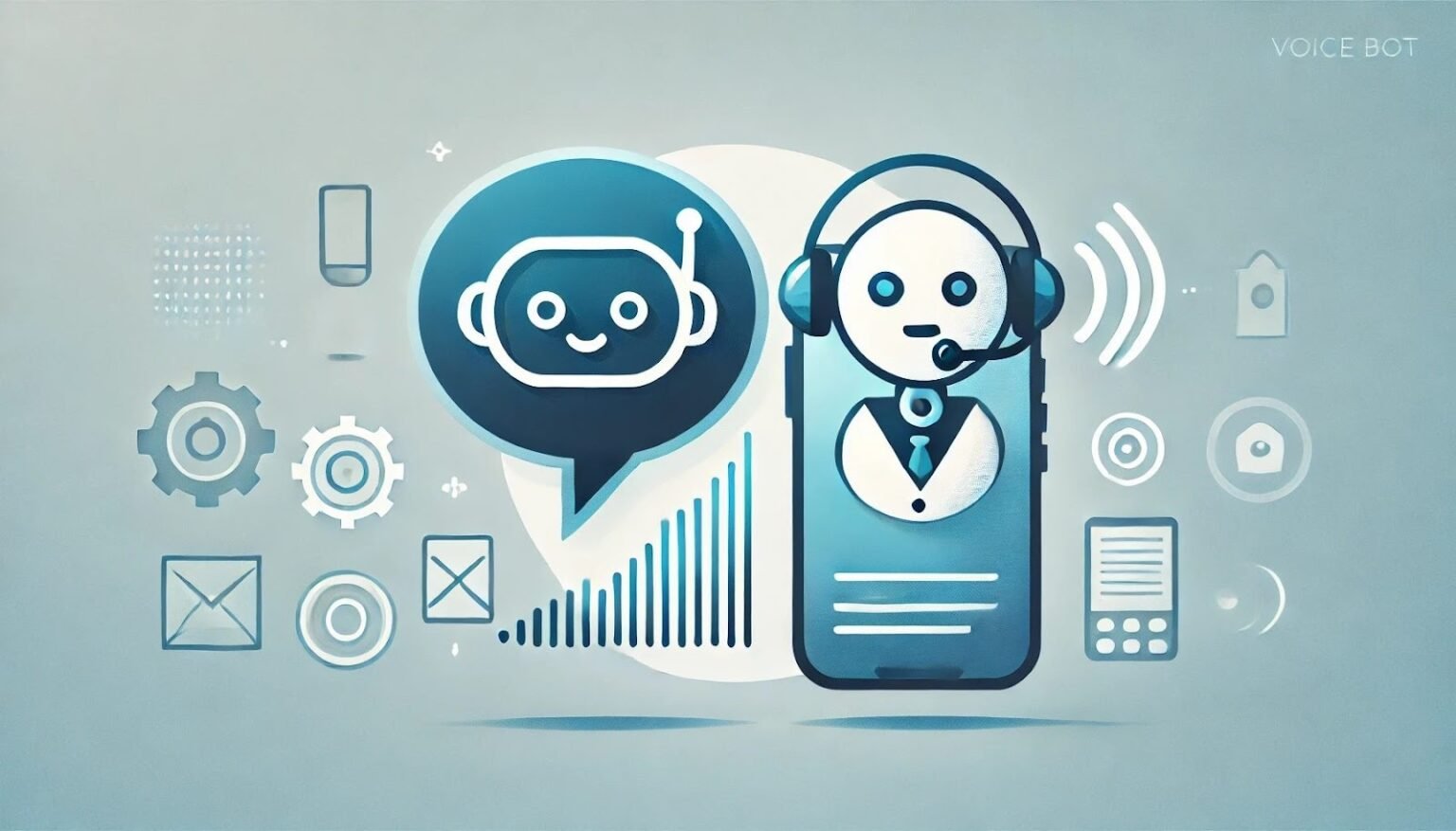Ever wondered how AI-powered bots can revolutionize your business? The choice between chatbots and voice bots is crucial in delivering exceptional customer service. Both offer unique advantages, but understanding their differences can help you make the best decision for your business needs. Let’s dive into what chatbots and voice bots are, how they work, and which might be the perfect fit for you.
Understanding Voice Bots
Voice bots are AI-powered tools that interact with users through spoken language. Unlike chatbots, which rely on text, voice bots use voice recognition and natural language processing to understand and respond to spoken commands.
Voice AI, is one example of voice bots, quickly changing how we use devices and services. From Siri and Alexa to customer service tools, Voice AI is everywhere. But is Voice AI safe to use?
Definition and Basic Functionality
Voice bots are designed to engage users in conversation using voice. They can answer questions, perform tasks, and provide information, all through spoken interaction. This makes them particularly useful in environments where hands-free operation is preferred.
Use Cases in Customer Support, Sales Calls, and Automated Reminders
Voice bots excel in customer support by handling phone inquiries and providing quick responses. In sales, they can conduct outbound calls, gather customer feedback, and assist with orders. For automated reminders, voice bots can call customers to remind them of appointments, due payments, or upcoming events.
Advantages: Engaging Voice Communication, Suitable for Hands-Free Environments
Voice bots offer a natural and engaging way to communicate, making interactions feel more personal. They are ideal for hands-free environments, such as while driving or cooking, where typing is inconvenient.
Limitations: Limited to Calling Systems, Struggles with Complex Queries
However, voice bots are often restricted to voice-based interactions and can struggle with complex or nuanced queries. This limitation means they might not always provide the depth of service that a human agent can, especially for more complicated issues.
Understanding Chatbots
Chatbots are AI-powered tools designed to interact with users through text-based conversations. They can be found on websites, social media platforms, and messaging apps.
Chatbots simulate human conversation by using pre-defined rules or artificial intelligence. They can answer questions, provide recommendations, and even complete transactions. These bots are programmed to understand and respond to a variety of inputs, making them versatile tools for customer engagement.
Use Cases in Customer Support, Marketing, and Sales
In customer support, chatbots can handle routine inquiries, freeing up human agents for more complex tasks. They provide instant responses, enhancing customer satisfaction. In marketing, chatbots can engage visitors, gather information, and personalize user experiences. For sales, they can qualify leads and guide customers through the purchasing process.
Advantages: Multiplatform Integration, Visual Elements, Wide Range of Services
Chatbots can be integrated across multiple platforms, ensuring consistent communication with customers. They support visual elements like images, links, and buttons, making interactions more engaging. With a wide range of services, chatbots can be customized to meet specific business needs, from booking appointments to providing product recommendations.
Limitations: Cannot Handle Complex Questions Without Human Intervention
Despite their capabilities, chatbots have limitations. They may struggle with complex or nuanced questions, requiring human intervention to resolve certain issues. This limitation highlights the importance of a hybrid approach, combining chatbot efficiency with human expertise.
Key Differences
When deciding between chatbots and voice bots, it’s important to understand their key differences to choose the right tool for your business needs.
Communication Method: Text vs. Speech
The primary difference lies in their communication methods. Chatbots use text, making them suitable for platforms like websites, apps, and social media. Voice bots, on the other hand, interact through speech, ideal for phone-based services and environments where typing isn’t feasible.
Integration Capabilities: Digital Platforms vs. Calling Systems
Chatbots integrate seamlessly with various digital platforms, providing a consistent user experience across different channels. Voice bots are typically integrated with calling systems, making them perfect for handling phone calls and providing voice-activated services.
User Experience: Visual Aids and Text vs. Voice-Only Interaction
Chatbots can enhance user experience with visual aids like images, buttons, and links, which can guide users through complex processes. Voice bots rely solely on voice interaction, offering a more natural and conversational experience but lacking visual cues that can aid in understanding.
Choosing the Right Bot for Your Business
Selecting the right bot for your business depends on various factors. Each type of bot has unique strengths, and the best choice will align with your specific needs and goals.
Factors to Consider: Business Needs, Customer Preferences, Technical Infrastructure
Understanding your business needs is crucial. Do you require quick responses to text-based inquiries or a more personal touch through voice interactions? Customer preferences also play a significant role. Some customers might prefer typing, while others might find voice interactions more convenient. Lastly, assess your technical infrastructure. Ensure your systems can support the integration of the chosen bot.
Scenarios Favoring Chatbots: Multi-Channel Engagement, Visual Content Needs, Complex Queries
Chatbots are ideal for businesses that need to engage with customers across multiple channels like websites, social media, and apps. They are also great for delivering visual content such as images, links, and buttons. If your business deals with complex queries that need detailed responses, chatbots can handle them efficiently, especially when combined with human support.
Scenarios Favoring Voice Bots: Hands-Free Environments, Simple Tasks, Voice-Based Engagement
Voice bots shine in environments where hands-free operation is a priority, such as driving or cooking. They are perfect for handling simple tasks like setting reminders, providing quick information, or conducting basic transactions. If your customer base prefers voice-based engagement, voice bots can offer a more natural and personal interaction.
Combining Chatbots and Voice Bots
For many businesses, a hybrid approach can offer the best of both worlds. Combining chatbots and voice bots can enhance the overall customer experience by leveraging the strengths of each type.
Benefits of a Hybrid Approach
Using both chatbots and voice bots allows you to cater to different customer preferences and scenarios. Chatbots can manage text-based interactions on your website and social media, while voice bots can handle phone calls and voice-activated tasks. This combination ensures a seamless and comprehensive service.
Conclusion
Choosing between chatbots and voice bots can significantly impact your business. Chatbots excel in multi-channel engagements and handling complex queries with visual aids, while voice bots provide a natural, hands-free interaction ideal for simple tasks and voice-based engagement. By understanding their differences and how they align with your business needs, you can make an informed decision. Moreover, combining both can offer a comprehensive, seamless customer service experience. This hybrid approach leverages the strengths of each type, ensuring efficiency and enhanced user satisfaction.
FAQs
1. What is the main difference between a chatbot and a voice bot?
Chatbots communicate through text, suitable for websites and social media. Voice bots use spoken language, ideal for hands-free environments like phone calls.
2. How do I decide which bot is right for my business?
Consider your business needs, customer preferences, and technical infrastructure. Chatbots are great for multi-channel engagement and visual content, while voice bots excel in hands-free, voice-based tasks.
3. Is Voice AI safe for business use?
Yes, Voice AI is generally safe, but it’s essential to implement robust security measures to protect user data and ensure compliance with privacy regulations.
4. Can I use both chatbots and voice bots together?
Absolutely. Combining both can enhance customer experience by leveraging the strengths of each, providing a seamless and efficient service across different interaction channels.
5. What are some examples of successful chatbot and voice bot integration?
Many businesses use chatbots for initial inquiries and FAQs, while voice bots handle more complex or follow-up interactions, creating a comprehensive support system.






